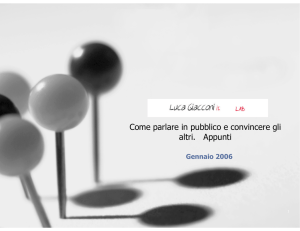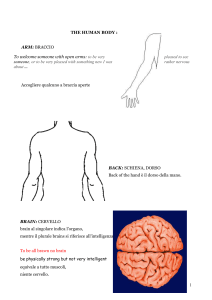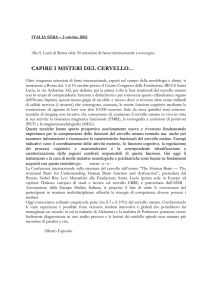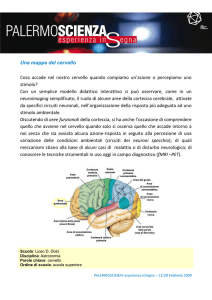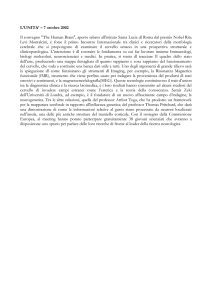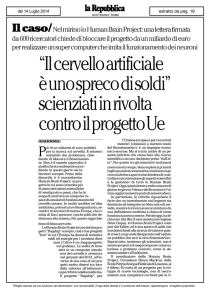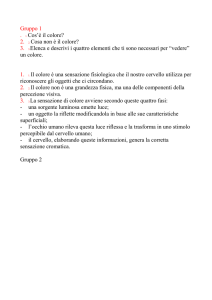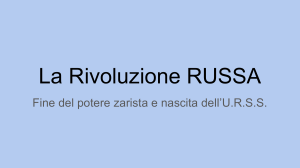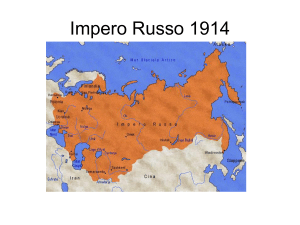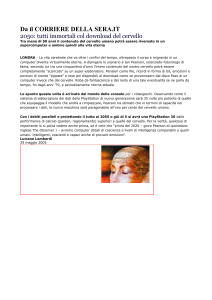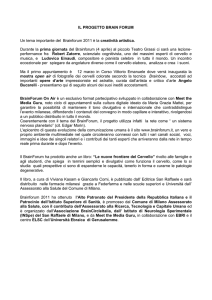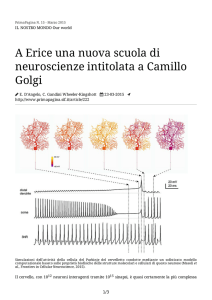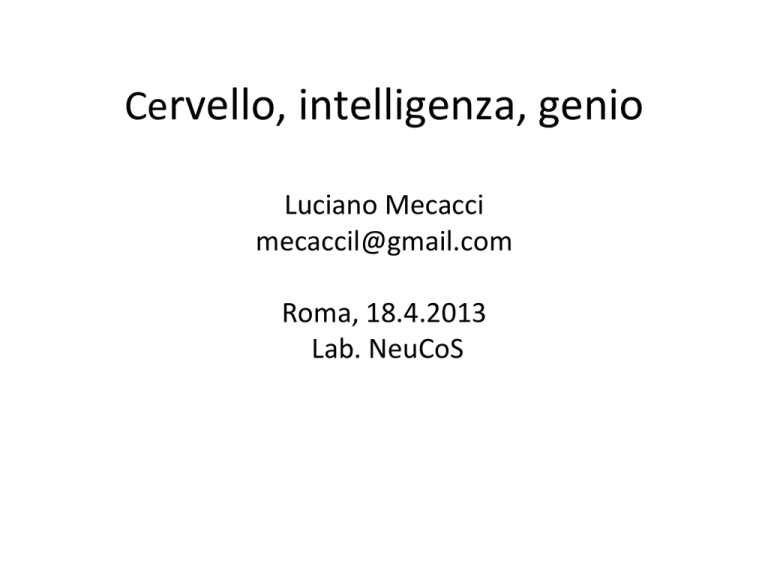
Cervello, intelligenza, genio Luciano Mecacci [email protected] Roma, 18.4.2013 Lab. NeuCoS Wilhelm GoClieb Kelch Ueber den Schädel Kants. Ein Beytrag zu Galls Hirn-­‐ und Schädellehre (1804) Johann G. Spurzheim, Phrenologie (1825)
Josiah Clark NoC and George Robert Gliddon Indigenous races of the earth (1857) Samuel G. Morton
Crania Americana; or, A Comparative View of the
Skulls of Various Aboriginal Nations of North and
South America: To which is Prefixed An Essay on the
Varieties of the Human Species (1839)
1) Stephen J. Gould, The mismeasure of man (1981)
2) Editorial, «Nature» (23 giugno 2011)
Rudolph Wagner (1855) Carl Friedrich Gauss (1777-1855)
peso del cervello = 1492 g
Edward A. Spitzka (1901) Hermann von Helmholtz
uomo della Nuova Guinea
gorilla
Parametri di differenziazione 1) conformazione del cranio (“bernoccoli”) 2) peso 3) circonvoluzioni e solchi della corteccia cerebrale 4) asimmetria emisferica 5) composizione cellulare (citoarchiteConica) Korbinian Brodmann (1909) da sinistra:Brodmann, Cécile Vogt e Oskar Vogt
IsYtuto del cervello Fondato nel novembre 1928 direCore: Oskar Vogt (1928-­‐1936) DiparYmento per la ricerca sul cervello DiparYmento di biologia delle razze Museo -­‐ “Pantheon dei cervelli” (Vladimir M. Bechterev) Vogt e il cervello di Lenin Il cervello di Lenin (m. 21.1.1924) sezionato in 30.953 parY Oskar Vogt, Pravda, 15 novembre 1927 (“un importante contributo alla spiegazione materialisYca della psiche in genere”) Nikolaj Semaško, Rote Fahne, 27 novembre 1927 (rilevanza di questo Ypo di ricerca “nell’area dove la metafisica e il dualismo sono ancora forY”) O. Vogt (1929): Lenin “atleta delle associazioni” Rapporto del 27 maggio 1936 Oleg S. Adrianov, Ricerche sul cervello di Lenin (1993) Tilman Spengler, Lenin Hirn (1991) Mochen Richter, Rasse, Elite, Pathos. Eine Chronik zur medizinische Biograhie Lenins und zur Geschichte der Elitegehirnforschung in Dokumenten (2000) Michael Hagner, Geniale Gehirne. Zur Geschichte der Elitegehirnforschung (2004) Paul Gregory, Lenin’s brain and other tales from the Soviet secret archives (2008) Lenin
Stalin
Gesso del cervello di V. M. Bechterev
Pantheon dei cervelli (Mosca) 1924 Lenin (1340) 1927 Bechterev (1720) 1928 Bogdanov 1928 Rossolimo (1543) 1930 Majakovskij (1700) 1933 Zetkin 1934 Belji 1934 Kirov 1934 Vygotskij 1935 Mičurin 1936 Gorkij 1936 Pavlov (1517) 1938 Stanislavskij 1939 Krupskaja 1946 Kalinin 1948 Eisenstein 1953 Stalin 1989 Sacharov (1440) Big-­‐brained people are smarter: A meta-­‐analysis of the relaUonship between in vivo brain volume and intelligence Michael A. McDaniel «Intelligence, 33, 2005, 337-­‐346 The relaYonship between brain volume and intelligence has been a topic of a scienYfic debate since at least the 1830s. To address the debate, a meta-­‐analysis of the relaYonship between in vivo brain volume and intelligence was conducted. Based on 37 samples across 1530 people, the populaYon correlaYon was esYmated at 0.33. The correlaYon is higher for females than males. It is also higher for adults than children. For all age and sex groups, it is clear that brain volume is posiYvely correlated with intelligence. Dean Falk, Frederick E. Lepore and
Adrianne Noe
The cerebral cortex of Albert Einstein:
a description and preliminary analysis
of unpublished photographs
«Brain» 2013: 136, 1304-1327 |
“Se l’ereditarietà [il complesso dei caraCeri innaY] fonda la potenzialità della genialità, è solo l’ambiente sociale che realizza questa potenzialità e fonda il genio” L. S. Vygotskij, [Genialità] in [Grande Enciclopedia Medica], 1929, vol. 6, col. 613

